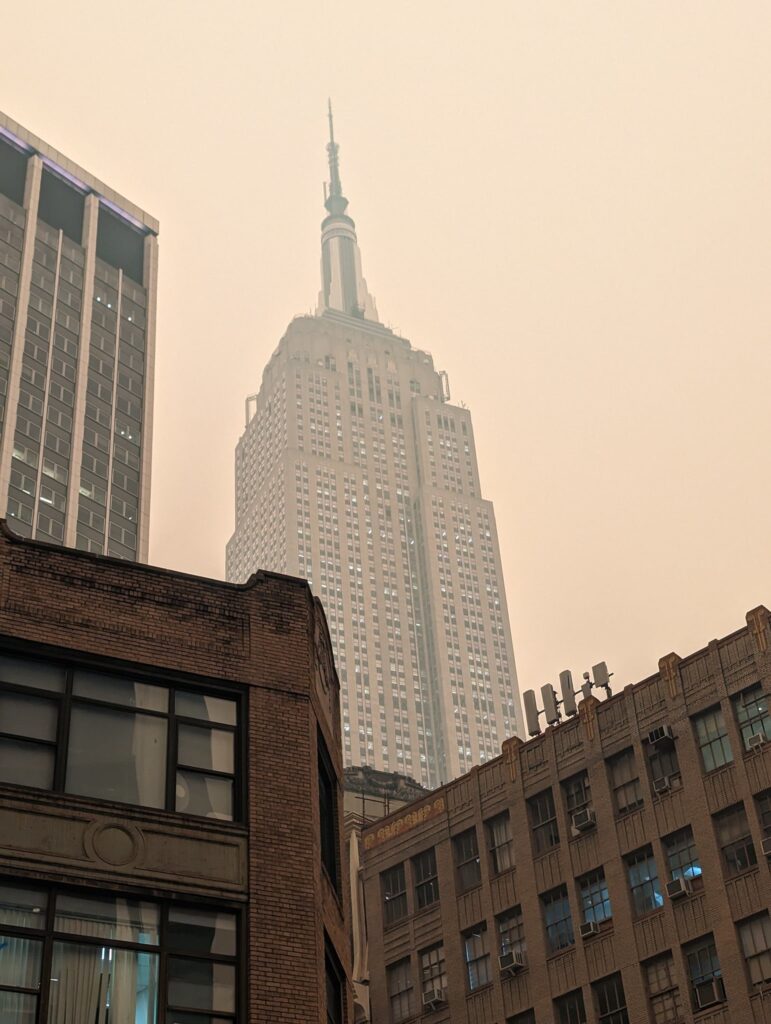
White balance is a feature in cameras that adjusts the colors in a photograph so that they look natural to the human eye. It does this by compensating for the color of the light in the environment. Different light sources—such as sunlight, fluorescent lights, or incandescent bulbs—emit different color temperatures, which can cause the colors in a photograph to look different than they do in real life.
For example, if you take a photograph in the shade, the light is actually quite blue, so the camera adds warmth (yellow and red tones) to balance out the blue and make the photograph look natural. Similarly, if you take a photo under tungsten light, which is quite yellow, the camera will add blue to the image to neutralize the yellow and make the image look more natural.
Here's where the irony comes in with the orange smoke from forest fires. The camera's automatic white balance is designed to correct for color casts in the light. But when the whole sky is filled with orange smoke, the camera interprets that as the light source itself being extremely warm (orange). In an attempt to compensate for what it perceives as overly warm light, it adds a lot of cool tones (blues and greens) to the image.
So instead of capturing the sky as it looks to our eyes—as orange—the camera might make the sky look white or even slightly cool-toned. It's trying to balance out the color of the light, but in this case, the color of the light isn't the problem; the color of the light is accurately representing the unusual environmental conditions.
This situation inadvertently educates people about white balance because they can see the camera struggling to interpret the scene accurately and trying to correct for a color cast that isn't really a color cast. It's a stark reminder that while automatic white balance can be incredibly helpful, it's not infallible and doesn't always interpret the scene the way a human would. Sometimes manual adjustment or post-processing is necessary to get the colors in a photograph to look the way we see them with our eyes.
Photo by Eden, Janine and Jim